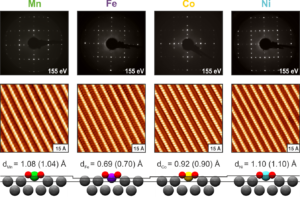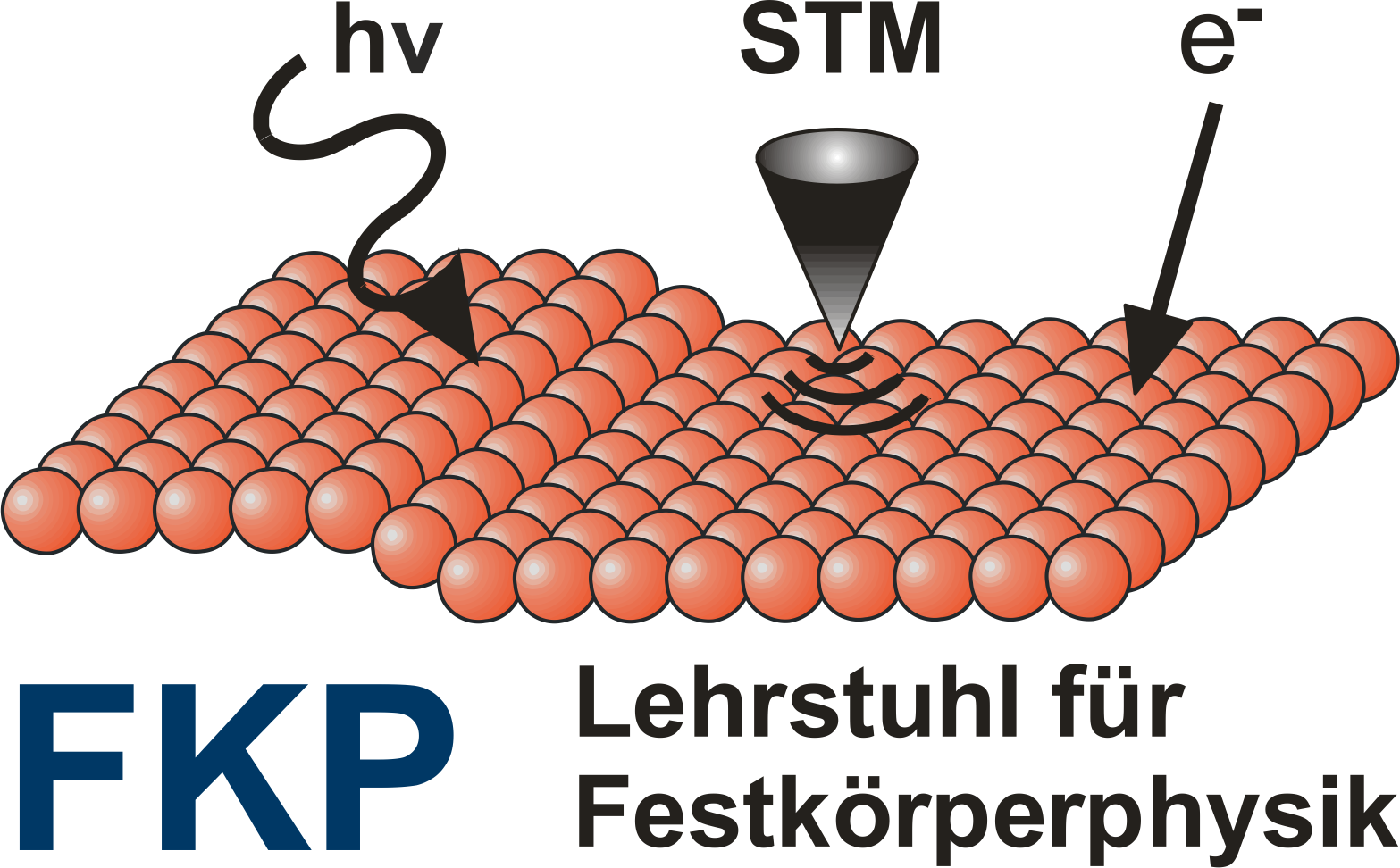Low energy electron diffraction

We are using the diffraction of low-energy electrons (LEED) to determine the structural parameters of surfaces with picometer accuracy. Since electrons with the used energies (10-900 eV) penetrate only the first few atomic layers and are sensitive to the position and chemical identity of the surface atoms, every surface structure has its own Intensity vs. Energy spectrum (I-E-spectrum) and thus a unique fingerprint.
Since the scattering phase information is lost during the experiment model structures have to be developed and their calculated I-E-spectrum is compared to the measured one (if needed the structure is refined again) until best agreement is made. The development of these model structures can be trivial if clear real space information by Scanning Tunneling Microscopy are available, but even if no such information is obtained we can model the energetics of different surface configurations with density-functional-theory (DFT) and draw conclusions about possible atomic arrangements. Furthermore, we have access to the composition of surfaces by using thermal desorption spectroscopy (TDS) and electron spectroscopies (X-ray photoelectron spectroscopy and Auger electron spectroscopy).
